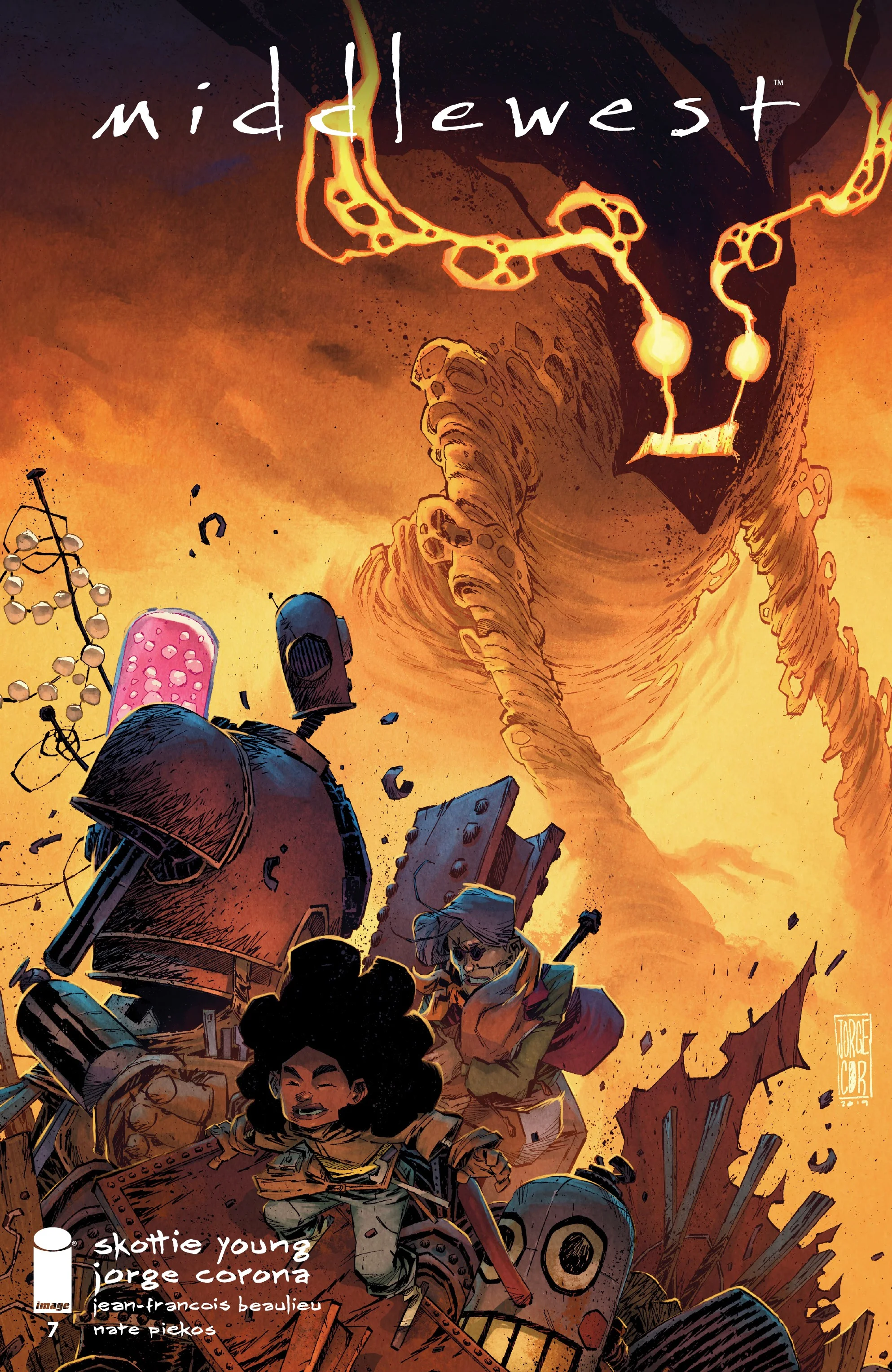Middlewest #18 // Review
Father and son clash as two supernatural tornadoes collide in the series finale of the contemporary fantasy Middlewest. Writer Skottie Young and artist Jorge Corona wrap-up the series with a highly kinetic drama vividly rendered with color by Jean-Francois Beaulieu. Young, Corona, and Beaulieu put together a satisfying ending to the 18-part series.
Abel has felt the force in him explode into the same magical tornado that his father had become. Now two forces clash as the magical tornado of Able meets his father's power. Meanwhile, all the carnies that Maggie has moved into position around the slaver's farm must scramble to save their lives and so many freed children's lives. Father and son threaten to tear everything apart with their anger. Still, understanding rests well within reach as the series draws to a close in a final aggressive explosion that shows just how far everything has come for Abel in the past couple of years.
Young closes things out on the series without weighing the panels down in text over-rendering the moments. Dialogue is used sparingly for every character. There is no narration. The big climax is pretty much what might be expected. There are no big surprises, but Young is able to direct the art team to some very moving dramatic moments. Perhaps the single most impressive conflict resolution moment in the whole series happens as Maggie confronts the slavers. There have been some very massive, percussive conflicts playing out in the pages of Middlewest in the course of its run. Maggie's simple, quiet use of basic logic in the face of danger comes across as one of the more dramatic moments in the whole series.
Corona and Beaulieu are given vast stretches of page in which to allow the tornadoes to have it out with each other. The vastness of a massive storm on the open page is something that is rarely, if ever done. It's beautiful, terrifying stuff that gives the climax of the series a fairly breathtaking action sequence on which to end. The interpersonal drama that follows that storm is cleverly conducted across the page in the moody haze that follows the storm. Beaulieu's subtle accomplishment with the sky after the story's climax is, in its own way, every bit as impressive as the roiling pyrotechnics of the colors in the supernatural clash of two massive storms.
Ending the story without completely shutting the door on a fascinating world of small-town American magic and mystery. Young and company could do so much more in the world of Middlewest that witnesses the simple power of the climactic clash of this final issue. The world of small-town magic has played out here in an amplification of the cycle of familial domestic violence. It's a powerful magical amplification, but there are so many other small-town midwestern American themes that could be explored in a world like this. It's too bad Young and company have chosen to end the story after only 18 issues.










